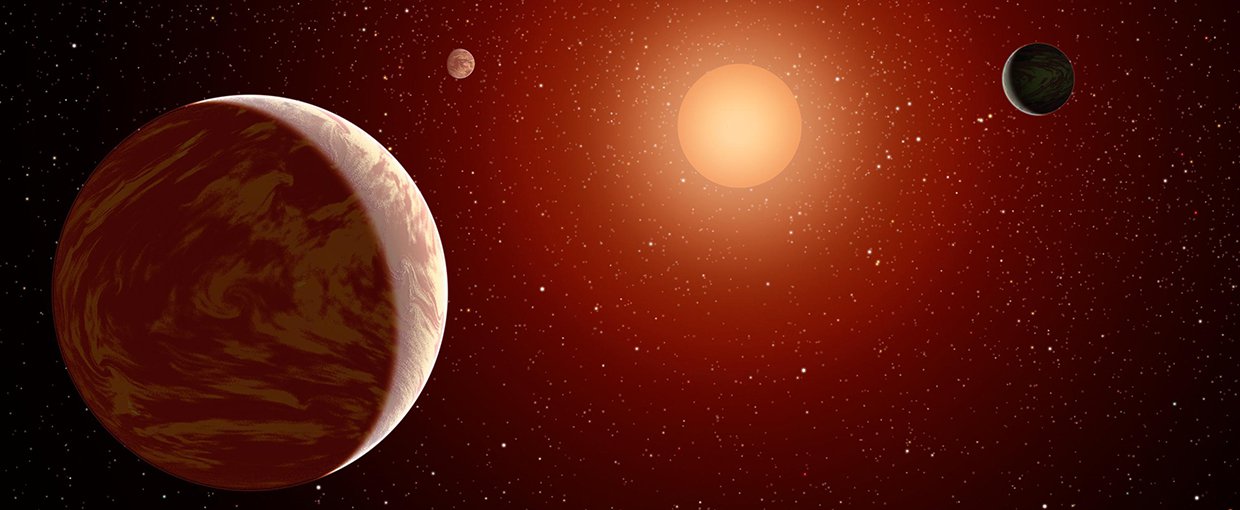
June 10, 2019
Research Highlight
Spotting Climate States in M Dwarf Systems

Artist rendering of a red dwarf or M star, with three exoplanets orbiting. About 75 percent of all stars in the sky are the cooler, smaller red dwarfs.Image credit: NASA.
In the coming decades, planets around M-Dwarf stars could provide some of the best targets of study in the search for habitable worlds beyond our Solar System. M-Dwarf stars are the coolest and smallest main sequence stars. The properties of M-Dwarf stars result in conditions that could make planets in M-Dwarf systems the easiest to target for atmospheric studies using technologies that will be available in the coming years. For instance, the habitable zone of M-Dwarf systems is relatively close to the central star. This means that the orbits of planets in the habitable zone are also close in and planets would circle their sun relatively quickly, allowing scientists on Earth to view the planet transiting its sun more frequently.
A recent study has modeled the characteristics of spectral signals from planets in M-Dwarf systems based on climate simulations of Earth-sized aquaplanets. The study provides predictions of surface temperature and location of water vapor, clouds, and surface ice on the planets. The results also reveal information about the spectral signals we might see from planets in climate states including: icy, temperate, or incipient runaway greenhouse.
The study, “Simulated Phase-dependent Spectra of Terrestrial Aquaplanets in M Dwarf Systems,” was published in The Astrophysical Journal. The work was supported by the Nexus for Exoplanet System Science (NExSS). NExSS is a NASA research coordination network supported in part by the NASA Astrobiology Program. This program element is shared between NASA’s Planetary Science Division (PSD) and the Astrophysics Division.